While dog breeds come from just about every country in the world, Germany is home to a wide variety of versatile working breeds. Some of them are obvious based on the breed names, others are unexpected, and some you might’ve never heard of! But regardless of how familiar these dogs are, they’re all lovable and come from the same location. So, if you were curious about where different dog breeds originate, now is the time to find out! Coming in all different shapes and sizes, there’s no doubt that there are some German dog breeds for everyone.
#1 – Affenpinscher
This German terrier dates back to the 17th century. They were used as ratters, removing rats and other vermin from kitchens and stables. This breed is also known as the Monkey Dog due to the unique, ape-like appearance. But most dog lovers adore this breed’s look since these canines have round, flat faces like teddy bears. Their personalities waiver often, bouncing between serious and silly, depending on their mood.

#2 – American Eskimo Dog
Despite the misleading name, the American Eskimo Dog is actually one of the many German dog breeds. This breed of spitz dog was bred as a family companion and watchdog. These cloud-like canines became popular in the United States in the 1930s and 1940s after life as circus dogs. These small dogs are friendly with about everyone they meet. Yet, they may be more reserved when interacting with strangers.
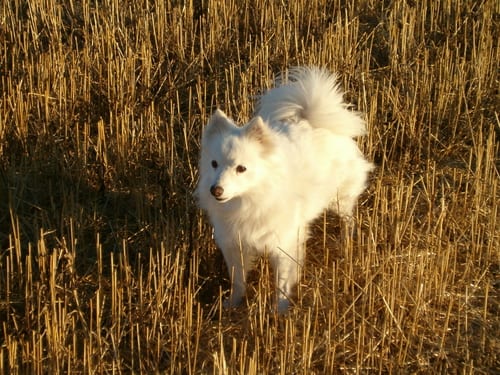
#3 – Boxer
The Boxer is a breed of Molosser developed in the late 19th century. These dogs were used as hunting dogs for larger game such as wild boar, bears, and deer. Today they make excellent family companions that can work as suitable watchdogs too. They’re beloved for their silly, charming personalities. They can be very well-behaved and obedient, but only when trained with positive reinforcements. They’re overly sensitive dogs, so they don’t take harsh punishments well.
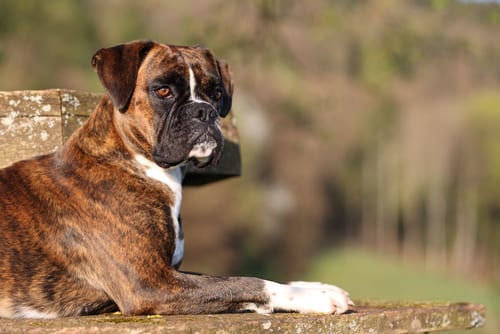
#4 – Dachshund
The Dachshund is a short-legged hunting dog created in Germany to crawl into badger and rabbit dens to catch their quarry. The breed comes in smooth, long, and wire coat varieties in both a standard and miniature size. In the United States, the breed was also used to hunt prairie dogs. But today these dogs make great, although active, family companions. They’re lovable, playful dogs, but their unique body shape makes them prone to joint and back problems.

#5 – Doberman Pinscher
The Doberman Pinscher, or Dobermann Pinscher, is a working breed developed in the 1890s. These dogs descended from various other breeds. They served as the official war dogs of the United States Marine Corps during World War II. Today they are rarely used in police and military work but still make excellent guard dogs. Instead, they’re lovable family dogs with sensitive souls. They adore spending time with their loved ones, but they also aren’t afraid to protect them at all costs.
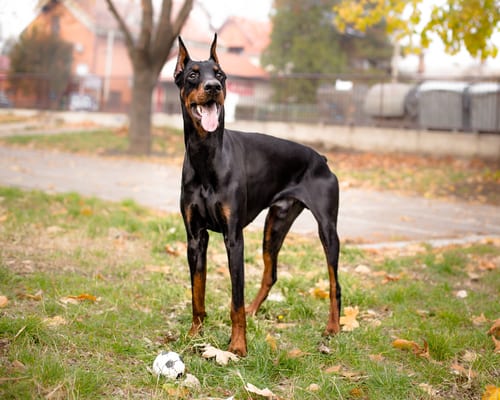
#6 – Eurasier
The Eurasier is a spitz dog from Germany originating in the 1960s. They have been bred only as companion dogs and they are gentle-natured. Because of their spitz heritage, they are alert and make great watchdogs. Few are familiar with this family-oriented breed, but once you see their fluffy coats, you’ll fall in love. These dogs adore being in close contact with their family members at all times, but they’re not fond of strangers entering their territory.
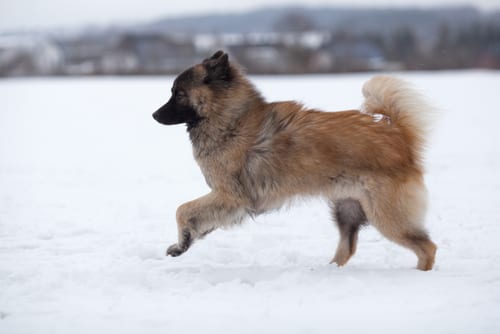
#7 – German Pinscher
The German Pinscher is believed to date back to the 15th century, when the breed guarded coaches and eliminated vermin in homes. These dogs are the ancestors of many other German dog breeds, including the Standard Schnauzer and Doberman Pinscher. In fact, they look a lot like smaller Dobermans. Despite their size, they’re energetic and intelligent, so they need a human who can keep them busy and entertained.
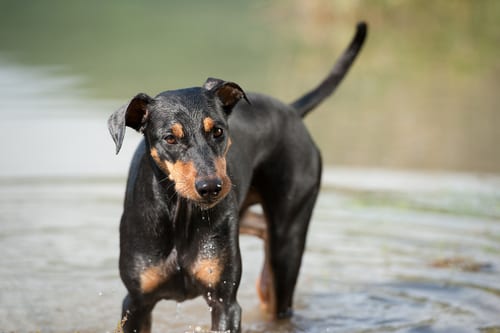
#8 – German Shepherd Dog
The German Shepherd Dog is the most iconic German breed, originating in the late 1800s. The breed was first used as a sheep tending dog but eventually became one of the most prevalent police and military dogs, where they’re still used today. But despite their tough reputation, German Shepherds can also make great family dogs. They’re obedient, loyal, and curious, which is why they can make ideal companions. Yet, they’ll always be on the lookout for danger to ensure that their humans stay safe.
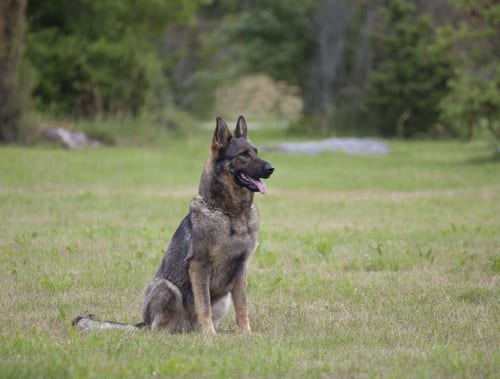
#9 – German Shorthaired Pointer
The German Shorthaired Pointer is a gun dog developed in Germany to hunt feathered quarry. These canines were created in the 19th century and are still one of the most popular hunting dogs today. They are active and intelligent dogs that make great companions as long as they have enough exercise. This breed is recognized by their brown and white coloring, with brown speckles throughout.
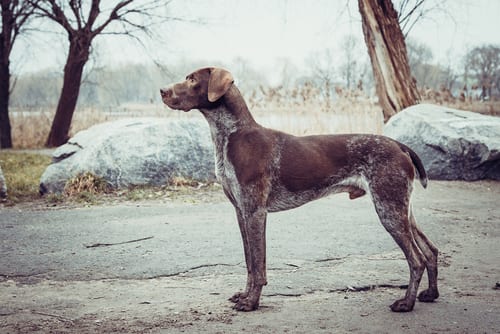
#10 – German Spaniel
Developed around 1890, the German Spaniel, also known as the Deutscher Wachtelhund Dog, hunted quail and retrieved waterfowl. These dogs are rare outside of their home country and are not commonly kept as pets, but rather as active hunting dogs. Yet, they could make great companions with proper training since they have friendly personalities.
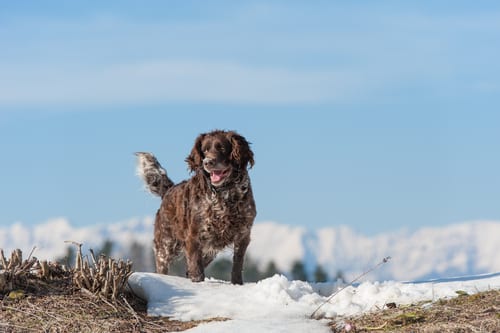
#11 – German Spitz
The German Spitz is a small spitz dog that is thought to be the ancestor of the rest of the spitz breeds from Germany. In Europe, there are various types of German Spitz, but all are considered part of the same breed. They’re small fluff balls, usually 25 pounds or less. They’re lively and energetic, but also attentive when needed. Also, they’re easy to train, but unlike other German dog breeds, they don’t have a hunting instinct. So, they’re better at being watchdogs since they distrust strangers.
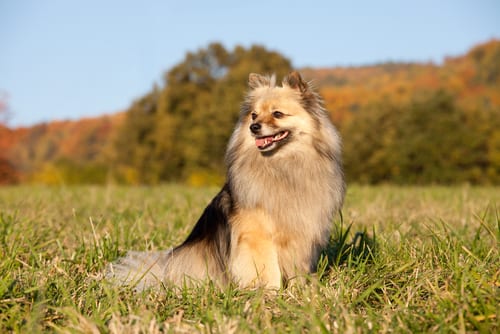
#12 – Great Dane
The Great Dane, also known as the German Mastiff, is a giant breed of dog used for hunting and guarding. Their primary target was wild boar and bears, although large deer would also be sought after. The Great Dane is one of the tallest dog breeds in existence today. Yet, you rarely see them in working roles anymore. They’re often seen as lazy family dogs who love to cuddle and play with their humans. Unfortunately, due to their massive size, they have one of the shortest lifespans though.

#13 – Hovawart
Although these dogs resemble Golden Retrievers, Hovawarts are actually estate guarding dogs from Germany. They come in either gold, solid black, or black with tan spots. The breed dates back to the 13th century and today is used in jobs such as search and rescue and tracking. They have a deep devotion for their loved ones, which is why they excel at protecting their family members.

#14 – Jagdterrier
The Jagdterrier is a strong working terrier from Germany, used for hunting a variety of prey. They are most commonly used for dangerous prey such as boar, raccoons, badgers, and foxes. The breed is very strong-willed with a high prey drive, making them typically unsuitable for family companions. But like most German dog breeds, they are trainable. So, they could learn to be loyal family dogs if given the chance.
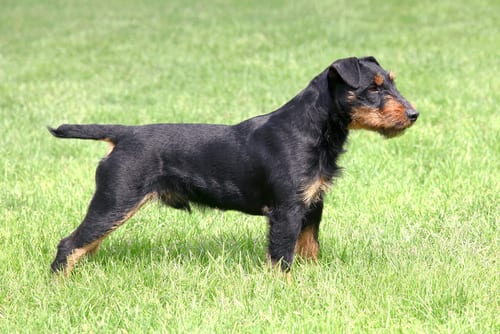
#15 – Keeshond
The Keeshond is a German Spitz dog bred for companionship and watchdog capability. They are very playful dogs that do well with children and continue to be found in family homes today. They have gorgeous fluffy coats that closely resemble a Pomeranian or Samoyed. They’re friendly, outgoing dogs that love to be the center of attention. It’s likely the reason that so many people adore them.
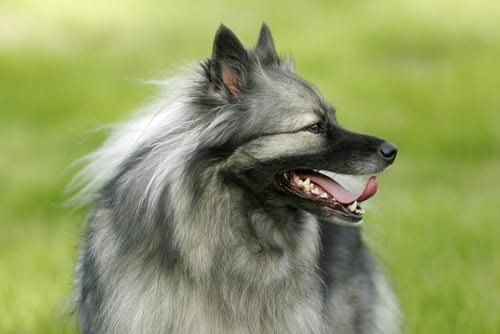
#16 – Large Münsterländer
The Large Münsterländer is a large gun dog originating in Germany. These dogs gained recognition in the early 1900s. They differ from the Small Münsterländer due to their size and color. This breed is only found in solid black or black and white, often with black ticking spots. These dogs are known to have high levels of endurance, and they love spending time outside. Facing rough terrain, wet environments, and cold climates are no problem for these dogs.

#17 – Leonberger
The Leonberger is a working dog originating in the 1830s. They are giant dogs that were used for general purpose farm work, guarding, and draft work. The breed is very intelligent and gentle, making these dogs excellent family companions regardless of size. While they’re often patient and serene, they also love to play with their family members. And most people can’t resist their thick, lush coats.
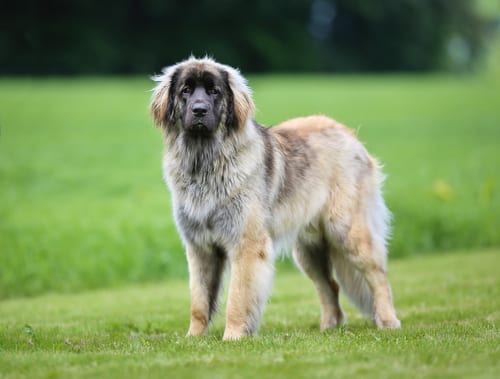
#18 – Löwchen
The Löwchen, or Little Lion Dog, can be traced as far back as 1442. This breed was a companion dog for wealthy families and was once the rarest dog breed in the world. Today it’s still a rare breed, but is much more common than it used to be. These affectionate, playful, and outgoing dogs rock a unique hairstyle. The hair around their butt is shaved, but the front half of them remains long. This breed is low-shedding and adaptable, which is likely why these dogs are so desirable.
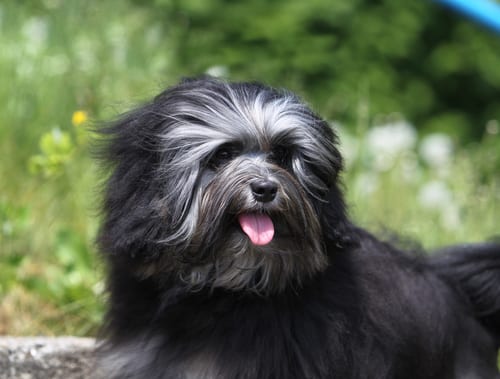
#19 – Miniature Pinscher
The Miniature Pinscher has a somewhat unknown origin, but dates back at least 200 years. Despite their appearance, they’re not small versions of the Doberman or German Pinschers. Instead, they’re a unique breed used as a ratting dog in barnyards. They don’t know how small they are, so they act fearless and brave without a worry in the world. They’re a fun-loving breed and great companion dogs, but they’re sure to keep you on your toes!
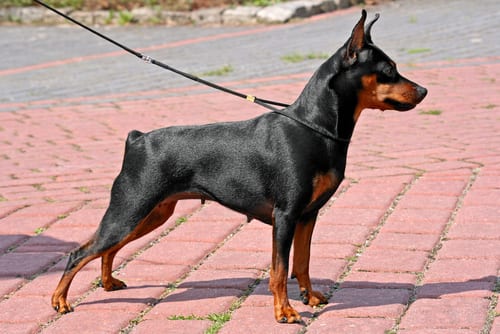
#20 – Pomeranian
The Pomeranian is a small spitz dog originating in Pomerania, what is now part of modern-day Germany. They became popular companion dogs by royals. Now, they’re still one of the most popular German dog breeds today. They are active dogs that do well with families but should be supervised around children. They’re tiny, only weighing 3 to 7 pounds, but they have as much energy as any larger dog. And of course, their fluffy coats are just as soft as they look!

#21 – Poodle
The Poodle, most notably the Standard and Miniature versions, is a water retrieving breed from Germany. The breed dates back to the 15th and 16th centuries. Standard Poodles were even used as war dogs since the 17th century. Regardless of size, they are very intelligent dogs that excel in a variety of dog sports as well as making great family companions. Many mistake them for glamorous show dogs, but they’re so much more than that. They’re playful, active, and loyal. They’re also beloved for their curly, low-shedding coats.
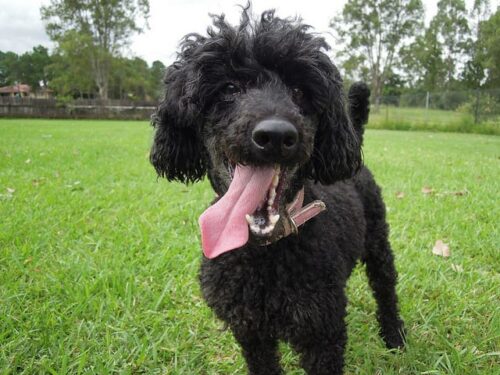
#22 – Rottweiler
Rottweilers were bred to herd livestock and guard property and family. They also pulled carts with butchered meats to the local markets. Additionally, they’re used in police and military work and search and rescue. They are dominant, protective dogs that can make great companions for the right owners. While they look tough and strong, they also have a lesser known sensitive side. They’re very loving, so they always have time for cuddles and kisses after a busy day of hard work.

#23 – Schnauzer
The Schnauzers of all sizes originated in Germany in the 15th and 16th centuries. They were used as guard dogs and rat catchers. Although they are considered terriers, they don’t have a typical terrier temperament. They make excellent family companions. These dogs are three different German dog breeds: Miniature Schnauzers, Standard Schnauzers, and Giant Schnauzers. All of them are friendly, intelligent dogs who have lots of energy to go around.
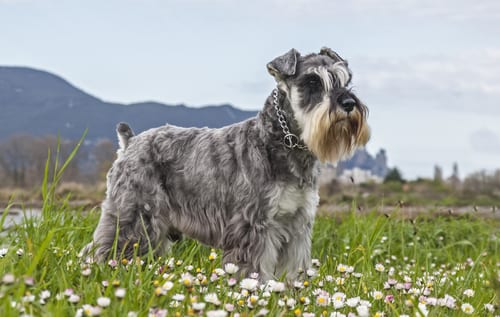
#24 – Small Münsterländer
Small Münsterländers are like their larger cousins but aren’t closely related. The breed was developed in Germany as a gun dog capable of hunting on land and in water. They were first used by royal families to hunt alongside their falconers. They have incredible tracking abilities, which makes them intelligent and trainable. The breed comes in white and brown, often with brown speckles. They love the water and can never resist a swim!
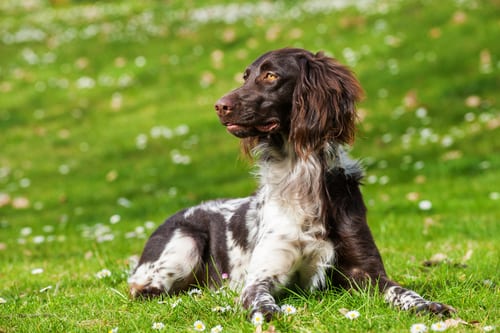
#25 – Weimaraner
The Weimaraner is a gun dog developed in the 19th century. They were used by royal families to hunt deer, boar, and bears. Then, after those species declined, they hunted smaller quarry such as foxes and rabbits. The breed is recognized by its unique, dilute grey color. Weimaraners are active, intelligent dogs that do well with families that can provide proper exercise. They’re fearless and obedient, but still crave quality time with their humans.
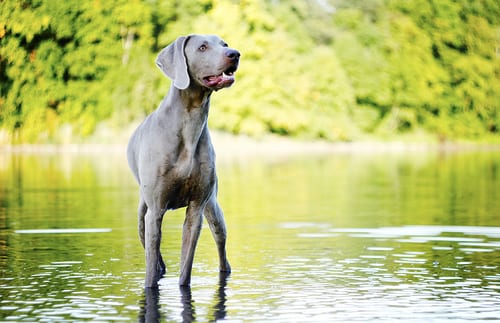
Dog breeds come from all over the world, so it’s surprising to see how many started in Germany. These 25 German dog breeds all share a common birthplace, but they’re still unique in many ways. So, where did your dog’s breed come from? They might be German and you didn’t even know it! Otherwise, some other common countries for dog breeds are France and Ireland.
 Toledo, United States.
Toledo, United States.
